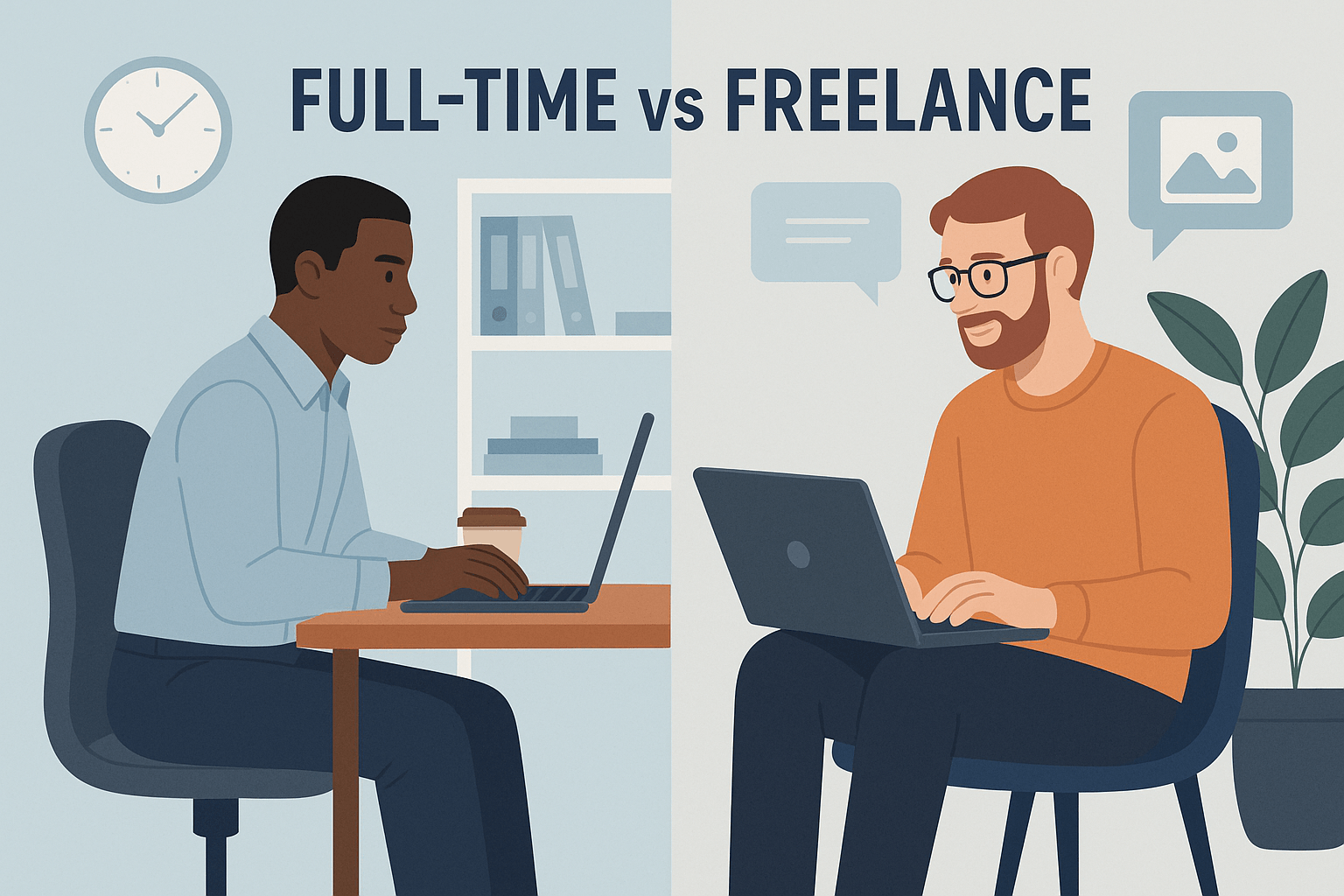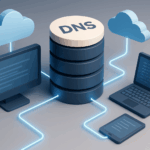Full-Time vs Freelance: Pros and Cons in Tech Industry
Table of Contents
- What is Full-Time Work in Tech?
- ✅ Pros of Full-Time Tech Work
- ❌ Cons of Full-Time Tech Work
- What is Freelancing in Tech?
- ✅ Pros of Freelancing in Tech
- ❌ Cons of Freelancing in Tech
- Key Factors to Consider Before Choosing
- 1. Lifestyle Preferences
- 2. Financial Goals
- 3. Career Stage
- Real-World Example
- Hybrid and Remote Options
- Conclusion
- You might also like
The tech industry is one of the most flexible fields when it comes to choosing how you work. Whether you’re building software, designing user interfaces, or managing cloud infrastructure, there’s usually a choice: full-time employment or freelancing.
But which one is better? The answer depends on your goals, work style, and what you value most—stability, freedom, income, or growth.
In this article, we’ll break down the key differences between full-time and freelance tech careers, and help you weigh the pros and cons of each.
What is Full-Time Work in Tech?
A full-time tech job typically means working 35–40 hours per week for a company. This could be as a software engineer, system administrator, data analyst, or product manager.
✅ Pros of Full-Time Tech Work
- Stability and Consistent Income: You receive a fixed salary, which helps with financial planning and loan approvals.
- Benefits: Health insurance, retirement plans, paid leave, and professional development programs are often included.
- Team Collaboration: You’re part of a team, which can enhance learning, career growth, and networking.
- Clear Career Path: Promotions, performance reviews, and mentorship help structure your growth.
❌ Cons of Full-Time Tech Work
- Less Flexibility: You may have to adhere to fixed schedules and company policies.
- Limited Project Variety: Working on the same stack or product for long periods can feel monotonous.
- Office Politics: Internal dynamics can sometimes affect morale or productivity.
What is Freelancing in Tech?
Freelancers work independently, often for multiple clients, on a contract or project basis. Roles vary widely, from web development and UX design to DevOps and AI consulting.
✅ Pros of Freelancing in Tech
- Flexibility: Choose when, where, and how much you work.
- Project Variety: Work on diverse projects with different clients and tech stacks.
- Higher Earning Potential: Depending on your skills and network, freelance rates can exceed salaried roles.
- Global Opportunities: Platforms like Upwork or Toptal allow access to clients worldwide.
❌ Cons of Freelancing in Tech
- Unpredictable Income: Workload (and payment) can fluctuate month to month.
- No Benefits: You’re responsible for health insurance, retirement savings, and taxes.
- Isolation: Working solo can be lonely and lacks the structure of a team.
- Client Management: You’ll spend time pitching, negotiating, and chasing invoices.
Key Factors to Consider Before Choosing
1. Lifestyle Preferences
- Do you prefer routine and structure? Full-time might suit you better.
- Need control over your time or location? Freelancing wins.
2. Financial Goals
- Want predictable paychecks? Full-time is safer.
- Comfortable with financial ups and downs and aiming for higher income? Go freelance.
3. Career Stage
- Early-career? A full-time job can offer mentorship and learning.
- Experienced professional? Freelancing can help you maximize freedom and income.
Real-World Example
A frontend developer working full-time may enjoy career growth and a consistent paycheck, but they might feel boxed into a single framework like React for years. On the other hand, a freelance frontend dev could take on short-term projects in React, Vue, and Svelte, learning faster—but they’d also need to spend time securing contracts and managing clients.
Hybrid and Remote Options
The line between full-time and freelance is blurring. Many full-time developers now work remotely, enjoying some freelance-style flexibility—and some even take on side gigs. According to the Stack Overflow Developer Survey 2024, 16.4% of respondents identify as independent contractors or freelancers, highlighting a growing shift toward freelance or hybrid work models in the tech industry.
Conclusion
There’s no one-size-fits-all answer in the full-time vs freelance debate—especially in tech. It’s all about what fits your current goals, risk tolerance, and lifestyle.
The good news? You’re in tech. That means you can pivot, mix both worlds, or build a unique career on your own terms.
Whether you’re just starting or considering a change, the choice is yours—and the possibilities are endless.







